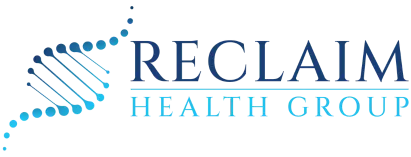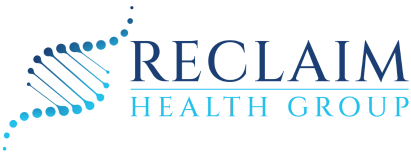According to the World Health Organization, musculoskeletal conditions affect more than 1.7 billion people worldwide. Musculoskeletal problems encompass a vast range of conditions that affect the muscles, bones, joints, and associated tissues. These issues can be the result of injuries, wear and tear, genetics, or underlying diseases. While some of these problems are minor and resolve on their own, others can be chronic and significantly impact quality of life. This article aims to shed light on some of the most common musculoskeletal problems that many individuals encounter.
Arthritis
Arthritis is an umbrella term for conditions that cause joint inflammation and pain. While over 100 types of arthritis exist, the two most prevalent forms are Osteoarthritis (OA) and Rheumatoid Arthritis (RA). OA is a degenerative joint disease that occurs when the protective cartilage at the ends of bones wears down over time. As cartilage deteriorates, bones begin to rub against each other, leading to joint stiffness, pain, and decreased mobility. Factors that heighten the risk of OA include age, obesity, joint injuries, and genetic predisposition. Over time, OA can progress and severely restrict movement. While it can damage any joint, OA typically affects the knees, hips, hands, and spine.
Unlike OA, RA is an autoimmune disorder where the body’s immune system mistakenly attacks the synovium, the thin membrane lining the joints. This causes joint inflammation, swelling, and pain. Over time, the persistent inflammation erodes the cartilage and bone within the joint. Additionally, RA can affect other body systems, including the skin, eyes, and cardiovascular system.
Back Pain
Back pain, whether acute or chronic, can be debilitating, affecting daily activities and quality of life. It can also originate from a variety of sources. Repeated heavy lifting or sudden awkward movements can strain the back muscles and ligaments, causing discomfort. Discs act as cushions between the individual bones (vertebrae) in the spine. When the soft material inside a disc bulges or ruptures, it can press on a nerve, resulting in pain.
Additionally, the lower back can be affected by osteoarthritis. In some cases, arthritis in the spine leads to a condition called spinal stenosis, where the space around the spinal cord narrows, causing pain.
Tendonitis and Bursitis
Tendonitis refers to the inflammation of tendons, the thick cords that attach muscles to bones. It’s often caused by repetitive minor impact or a sudden, more severe injury. Symptoms include pain and tenderness just outside a joint.
Bursae are small, fluid-filled sacs that cushion the bones, tendons, and muscles near your joints. Bursitis occurs when these sacs become inflamed. Common locations include the shoulder, elbow, and hip, but knees, heels, and the base of the big toe can also be affected.
Osteoporosis
Often termed the “silent disease” because it can progress undetected for years, osteoporosis is marked by decreased bone density and mass. As bones become more porous and fragile, the risk of fractures increases dramatically. The spine, hips, and wrists are common fracture sites. Factors that elevate osteoporosis risk include age, gender (women are more prone), hormonal imbalances, and inadequate calcium or vitamin D intake. Regular weight-bearing exercises, a balanced diet, and certain medications can help manage or prevent osteoporosis.
Muscle Strains and Sprains
While these terms are often used interchangeably, they refer to different types of injuries. Muscle Strain, also known as a pulled muscle, strains occur when muscle fibers stretch or tear. This can result from overuse, fatigue, or improper use of a muscle. Symptoms include pain, swelling, and limited muscle movement.
Sprains refer to ligament injuries caused when they stretch or tear. Ligaments are the thick elastic bands connecting bones to other bones. Ankles, wrists, and knees are common sites for sprains. Symptoms mirror those of strains but are localized around joints.
Each of these musculoskeletal problems, while common, requires a unique approach to diagnosis and treatment. Understanding their specifics can aid in seeking timely medical intervention and adopting preventive measures.
Carpal Tunnel Syndrome
Carpal Tunnel Syndrome arises due to the compression of the median nerve as it courses through the wrist’s carpal tunnel. This nerve gives sensation to most fingers and controls the thumb base muscles. Symptoms manifest as numbness or tingling, often in the thumb and adjacent fingers, nighttime or activity-related pain, and, sometimes, hand weakness. Those engaged in repetitive wrist actions, such as computer users or assembly line workers, are particularly susceptible. It is estimated that 1 to 5 percent of the adult population suffers from Carpal Tunnel Syndrome. Early diagnosis is vital to avert permanent nerve damage.
Fibromyalgia
Fibromyalgia is a multifaceted disorder distinguished by extensive pain throughout the body. Along with the pain, sufferers may experience fatigue, sleep disturbances, and cognitive issues. The body also develops tender points that react painfully to pressure. Its origin is still debated, but potential triggers include traumatic events, certain infections, surgeries, or physical injuries. The condition’s broad symptom range can make diagnosis challenging.
Bone Fractures
Any bone breakage is termed a fracture. These injuries can arise from significant impact or, in osteoporotic individuals, minor traumas. There are various types of fractures, such as simple fractures, where the skin isn’t broken; compound fractures, where the bone protrudes through the skin; stress fractures are caused by minuscule breaks from repetitive force. Typically, fractures present with pain, swelling, and potential deformity at the affected site.
Rotator Cuff Tear
The shoulder joint is stabilized by a group of muscles and tendons known as the rotator cuff. Tears in this group can occur suddenly due to injuries or develop gradually from wear and tear. Aging reduces blood flow to these tendons, making them vulnerable. Common manifestations include pain while resting (intensifying when lying on the affected side), a restricted range of arm motion, weakness during lifting, and a crackling sensation on certain movements.
Plantar Fasciitis
This condition concerns the inflammation of the plantar fascia, a thick tissue band connecting the heel to the toes on the foot’s underside. Plantar fasciitis is a leading cause of heel pain. Affected individuals often describe a sharp pain, particularly evident during the morning’s first steps. Causes range from repetitive strain (common in runners) to certain age groups, especially those between 40 and 60. Additionally, foot mechanics, such as flat feet or high arches, can alter weight distribution and exacerbate the condition.
Managing and Treating Musculoskeletal Problems
Prevention is the best approach to musculoskeletal issues. This involves maintaining a healthy lifestyle, incorporating regular exercise to strengthen muscles and bones, adopting good posture, and using proper techniques while lifting or carrying heavy objects.
However, if one does encounter these problems, various treatment modalities are available. Physical therapy, medications (like anti-inflammatories or muscle relaxants), braces or orthotic devices, and in some cases, surgery, can be used depending on the nature and severity of the condition.
Moreover, early detection and intervention can prevent these conditions from worsening. If you experience persistent pain, swelling, stiffness, or any form of discomfort, it’s essential to consult a healthcare professional for an accurate diagnosis and appropriate management.
In recent years, regenerative medicine has emerged as a groundbreaking approach in the treatment and management of musculoskeletal disorders. By leveraging the body’s innate capacity to heal, regenerative techniques focus on restoring damaged tissues, thereby offering potential solutions to conditions that were previously deemed irreparable. Particularly notable in this field are regenerative tissue transplants.
These transplants are designed to enhance the cushioning, structural support, and viscosity of injured joints. By introducing healthy, functional tissues into damaged areas, they can significantly alleviate pain, reduce inflammation, and improve overall joint function. The utilization of such transplants offers hope to countless individuals suffering from joint injuries, potentially reducing the need for more invasive procedures and paving the way for a future where chronic joint pain might become a thing of the past.
Living with Musculoskeletal Problems
Musculoskeletal problems are a widespread concern that affects millions of individuals across the globe. Awareness, prevention, and early intervention are the keys to managing these issues effectively and ensuring a pain-free, active life. However, you don’t have to go about this all alone.
At Reclaim Health Group, our unwavering mission is to usher in a new era of healthcare by delivering safe and effective therapies that harness the body’s natural healing abilities. As a dominant provider of regenerative tissue transplants across multiple states, our team of medical experts is at the forefront of pioneering treatments designed to enhance joint cushioning, structural support, and viscosity.
Discover the transformative potential of regenerative medicine with us. Contact us today and take the first step towards reclaiming your health.


